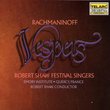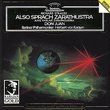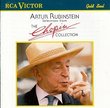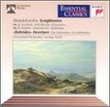| All Artists: Gustav Mahler, Sir Georg Solti, Arleen Auger, Lucia Popp, Chicago Symphony Orchestra, Yvonne Minton, Heather Harper, René Kollo, John Shirley-Quirk, Martti Talvela Title: Mahler - Symphony No. 8 / Popp · Auger · Minton · Harper · Kollo · Shirley-Quirk · Talvela · Chicago SO · Solti Members Wishing: 0 Total Copies: 0 Label: Decca Release Date: 8/10/1999 Genre: Classical Style: Symphonies Number of Discs: 1 SwapaCD Credits: 1 UPC: 028946097229 |
Search - Gustav Mahler, Sir Georg Solti, Arleen Auger :: Mahler - Symphony No. 8 / Popp · Auger · Minton · Harper · Kollo · Shirley-Quirk · Talvela · Chicago SO · Solti
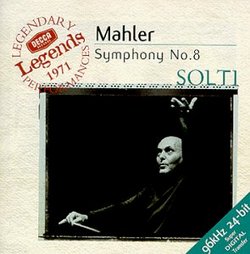 | Gustav Mahler, Sir Georg Solti, Arleen Auger Mahler - Symphony No. 8 / Popp · Auger · Minton · Harper · Kollo · Shirley-Quirk · Talvela · Chicago SO · Solti Genre: Classical
Solti was an eminent Mahlerian, reveling in the dramatic sweep and power of the scores but also surprisingly sympathetic to their many delicate, sparely scored passages. The gigantic Eighth Symphony is perhaps Solti's fine... more » |
Larger Image |
CD DetailsSynopsis
Amazon.com essential recording Solti was an eminent Mahlerian, reveling in the dramatic sweep and power of the scores but also surprisingly sympathetic to their many delicate, sparely scored passages. The gigantic Eighth Symphony is perhaps Solti's finest Mahler recording. The opening outburst, "Veni, creator spiritus," is shattering in its impact, and the next 80 minutes are an emotionally wrenching trek across Mahler's vast musical landscape. Most conductors do well simply to hold together this gargantuan, often ungainly combination of symphony, oratorio, and sceneryless opera (Part II is a setting from Goethe's Faust). But Solti's conducting makes it work by maintaining tension throughout. He gets superb orchestral playing from the Chicago Symphony and inspires a great Viennese chorus and the best team of vocal soloists to record this work. Add outstanding engineering that, nearly three decades later, still yields demonstration-quality sound, and you get the best stereo Mahler Eighth in the catalog. --Dan Davis Similarly Requested CDs
|
CD ReviewsNearly 30 Years Old, And Still One of The Best! Bob Zeidler | Charlton, MA United States | 04/30/2000 (5 out of 5 stars) "I remember well this recording from my LP days. Regrettably, in my conversion over time from LPs to CDs, this somehow got lost in the shuffle. Truly dumb! But Decca has saved the day with a totally fresh remastering on a single CD, and at a bargain price to boot! I find myself both agreeing and disagreeing with some of the previous reviewers (but, in the main, agreeing). Over the years, I've owned, listened to, and eventually discarded, several versions (Abravanel, Kubelik, Mitropolous, Scherchen come quickly to mind) and have put the two Bernstein recordings in storage for at least a while pending some time to rethink those performances through. The only other one remaining active in my collection is the Shaw, about which I make some brief comparisons to Sir Georg's along the way. I think that, in my time, only Bernstein and Solti really got it all together in this monster piece. To a true Mahlerite (as opposed to someone who simply gets off on the wall of sound and the "occasion" nature of the work), this may be the most difficult of all Mahler symphonies to pull off with the right conviction, because it is equal parts cerebral and visceral. And it can fail in a major way if any one of the required elements (soloists, choruses, orchestra, dynamics, pacing, coherence and "the catching of the long arc" that is essential in the second part) is lacking. In the cold, hard light of day, Solti is the winner. He is the disciplinarian that Bernstein is not, with an absolutely hair-trigger performance from the orchestra, and he is afforded better sound than either Bernstein recording. The presence of Kollo, Shirley-Quirk and Talvela guarantee a performance for the ages. Solti gauges the dynamics in the second section absolutely perfectly. I will listen to it again and again. The new "Legends" transfer is a marvel when one considers its date (1971). Not having heard the LP version in a number of years, there were a few minor "reacquaintance" adjustments I found myself having to make: - The sound stage comes across in a way which I do not remember from the LP version. The brass (except for the horns) sound as if they were behind a fairly heavy scrim except for when the choruses are not singing. Perhaps this is simply a matter of the singers sitting down and getting out of the way, a subtlety that was not apparent on LP nearly 30 years ago. - The soloists are miked a little too closely for my taste. But they are unquestionably the greatest group of soloists ever assembled for a performance of this work, so I can readily look past this minor point. - The chorus runs out of gas at the end of Veni, Creator Spiritus and thereby loses some of the cumulative impact that this "rush to an ecstatic finish" needs to have. These are all very minor points, and should deter no one from acquiring this enduring performance. I find myself agreeing with rac22 on the "good" and "less than good" Mahler from Solti and that this is the best Mahler that Solti ever did, because he did get the cerebral details correct (as in the long orchestral introduction to the Faust scene). I also find myself agreeing with Conrad Weisert on the matter of the performances of the choruses. Had the work been recorded in Chicago instead of Vienna, we would have had the benefit of the contributions of Margaret Hillis, which are exceeded only by those of her mentor, Robert Shaw. For those wanting a third version behind the Solti and either Bernstein, I recommend the Shaw for both the choruses and for his own sense of dynamics and pacing (which largely mirror Solti's, with a total timing difference of only nine seconds spread out over nearly 80 minutes). Shaw's choruses win out easily, and do lift the roof off the Woodruff Arts Center in Atlanta at the end of Veni, Creator Spiritus. The sound is the usual Telarc state-of-the-art. But the organ is anemic, the ASO is not the CSO, and Shaw, while having excellent and sympathetic female soloists, does not have Kollo, Shirley-Quirk and Talvela. Bob Zeidler" The First Recording to Get it Right Brandon H. Borrman | New York | 08/19/1999 (5 out of 5 stars) "Solti has doen a remarkable job on this recording. Already legendary, and often hailed as the single greatest version of No.8, the new transfer only adds to its appeal. There is an electricity here, a feeling that almost leads you to believe this concert was recorded live. Yes, as with all Solti's Mahler, the climaxes are impressive and expansive, but the quieter more intrspective moments are what really shine in this recording. Though No.8 may be a failure as a symphony, it is an amazing piece of music. The recording brings out the awe inspiring orchestral lines and keeps the gigantic choral foces from becoming a muddy mass. The new tranfer keeps the analog warmpth, while cleaning up and sharpening many of the more subtle textures. A trully wonderful achievement, and by far the greatest bargin of the available recordings." Truely miraculous! Jeff | Los Angeles, CA | 05/08/2000 (5 out of 5 stars) "This past September, I was fortunate enough to participate in 2 performances of this giant piece. I was one of 330 people in the chorus while the orchestra of 100 people were playing in front of us. Not exactly the "thousand" people needed to live up to this symphony's nickname. What exactly is my point? Well, to pull off a monumentous feat such as this symphony is no small task. It requires large scale forces paralleled with the requirment of a competent conductor who can extract from the forces a truely stellar performance. Well, Solti (in 1970) did something quite remarkable! From the first movement "Veni creator spiritus" to the end, Solti's control of the mammoth forces can be heard in the first bar alone! He does not let the orchestra drown the choir and vice versa. Much of the credit can be attributed to the CSO's excellent brass section (at that time).Solti's tempi are brisk unlike many of the other recordings out there (Shaw) but Solti's phrasing and balance of the plethora of dynamics is vital in sustaining a truely musical performance.Solti's handling of the brass and how he aligns the forces in the boisterous finale is what creates a "fountain of light" to quote Mahler's wife remarking on the first performance of this piece. There are many other recordings out there (Shaw, Abbado, Bernstein) but after hearing them all, Solti's stands far above the rest! Purchase your copy today!"
|

 Track Listings (16) - Disc #1
Track Listings (16) - Disc #1